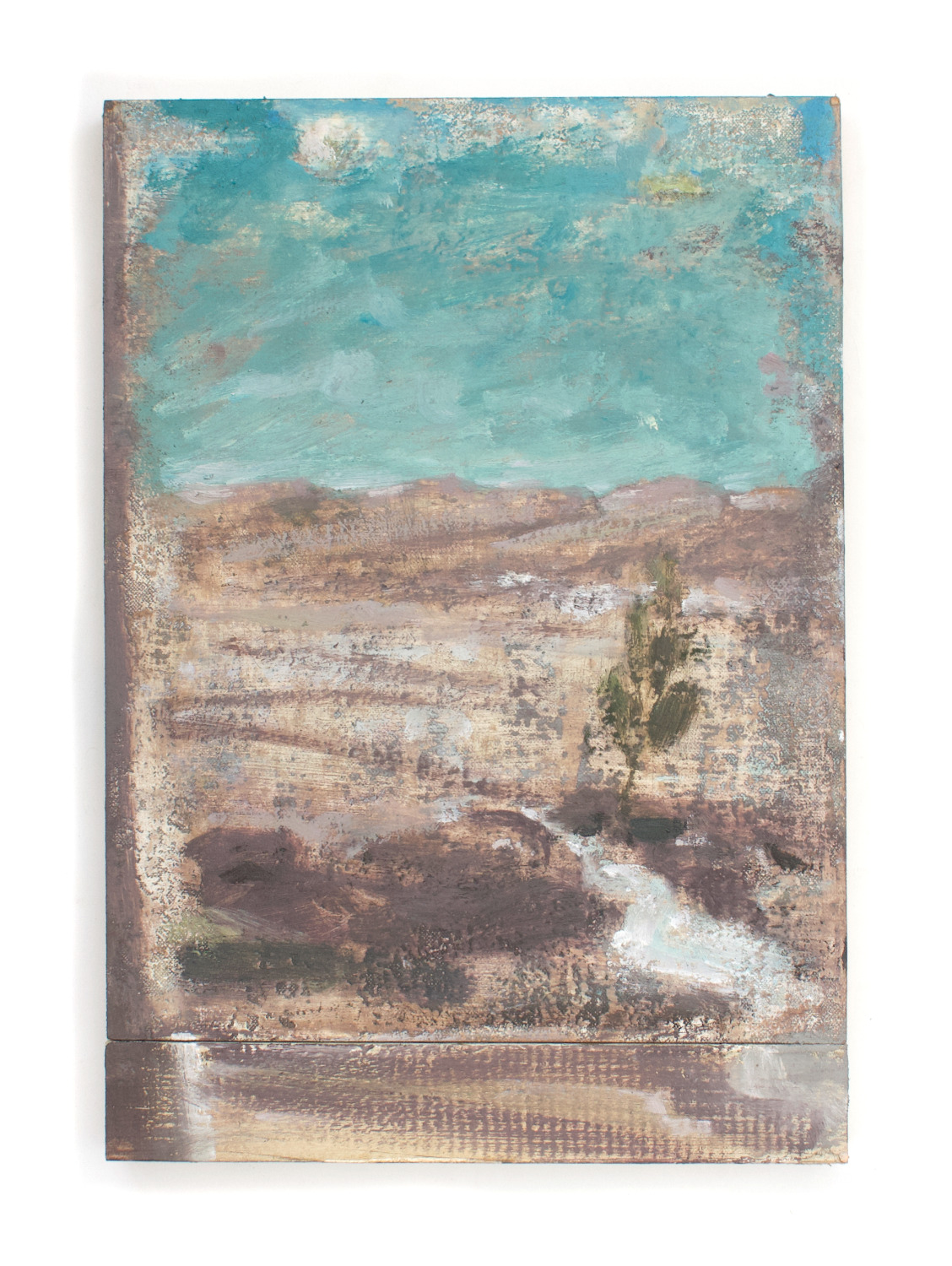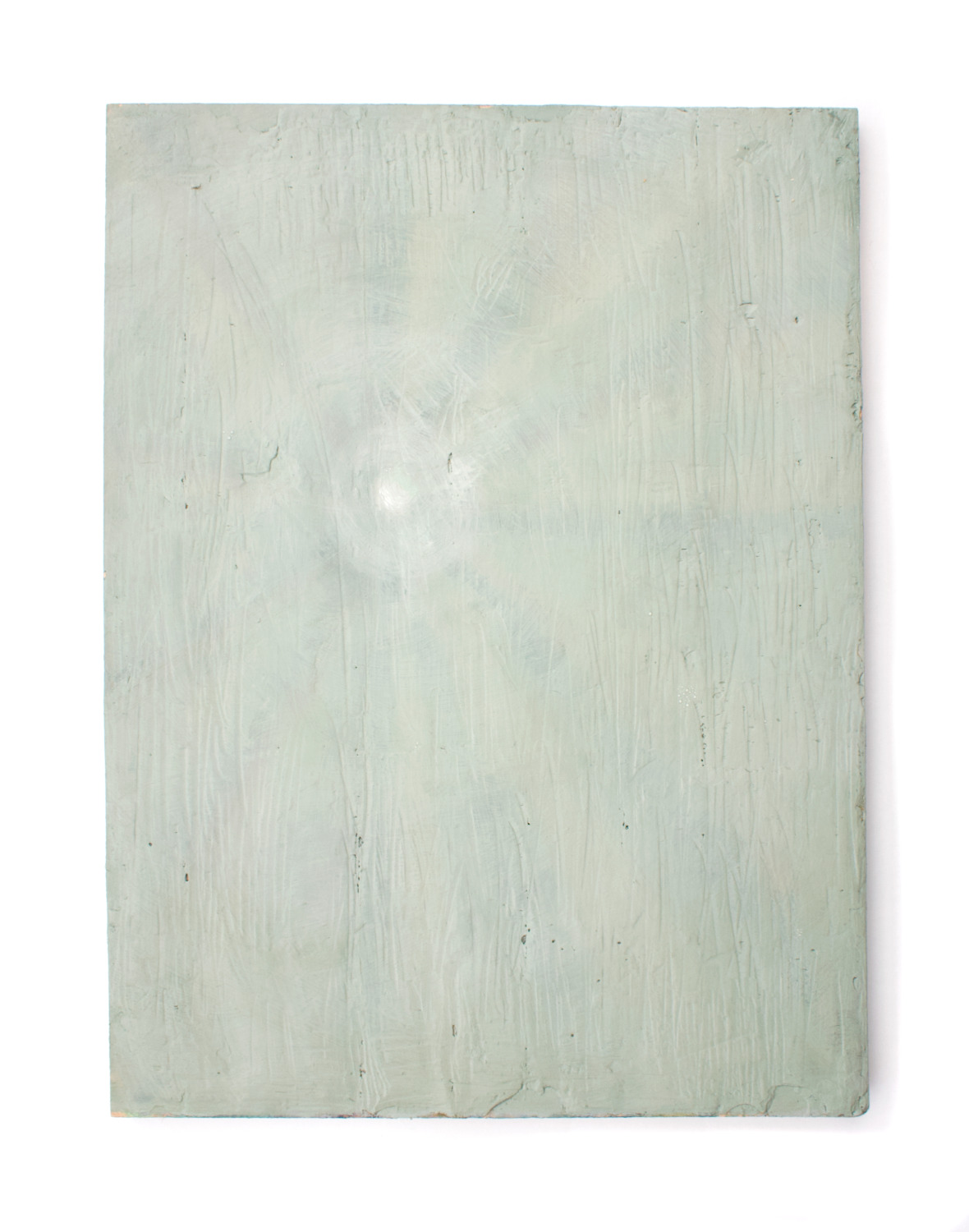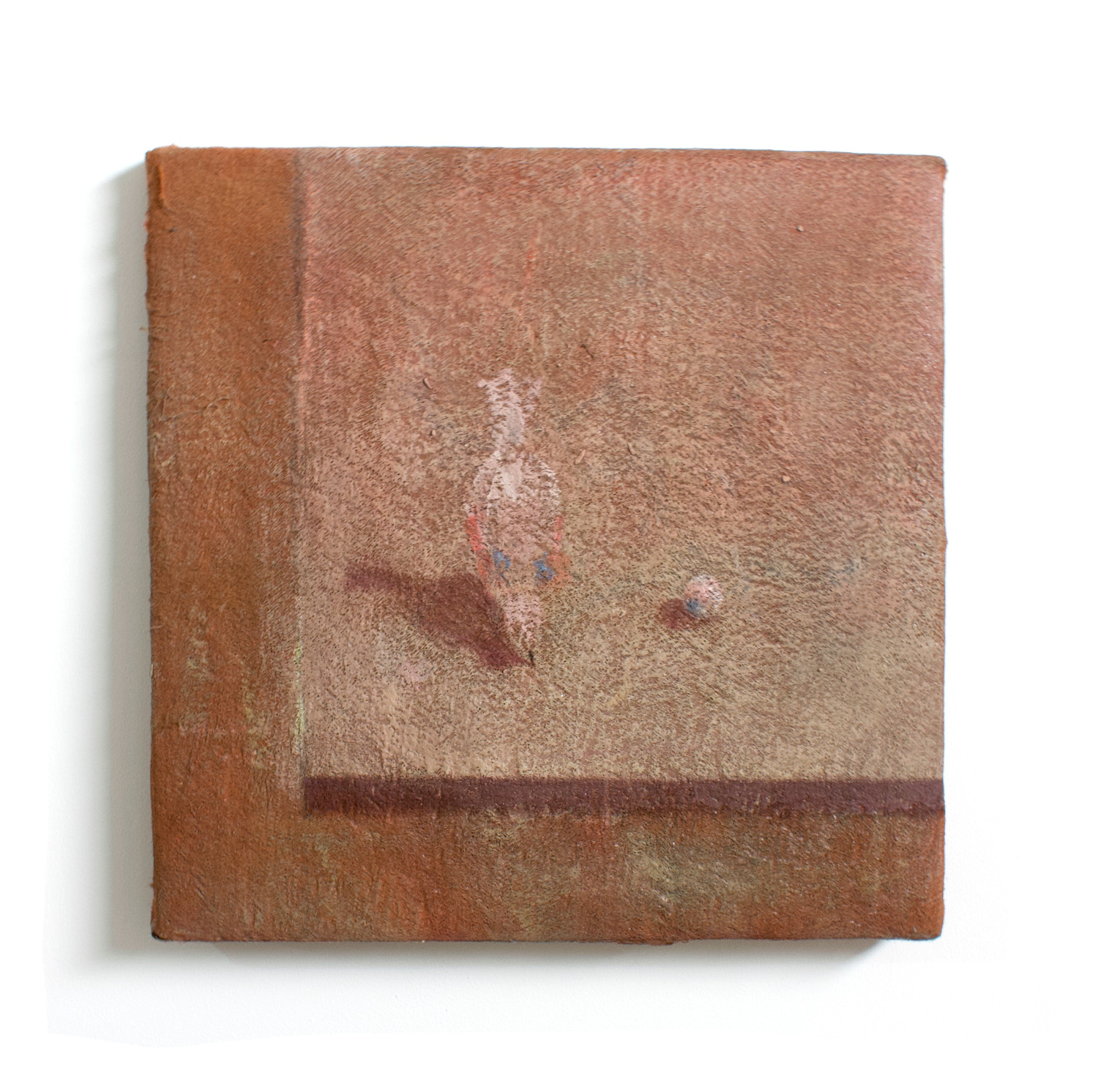Andrew North
Interview by Phin Jennings
-
Published in March 2023
-
Andrew North is in no rush. When he paints, it seems like his thoughts are directed more towards the act of image-making than the image itself. His upcoming solo exhibition Surfacing at South Parade will feature works created over the last 10 years. Ahead of its opening, I spoke with Andrew about his process, his subjects and why sooner isn’t always better.
-
I read that your works aim to capture an identity that transcends autobiography. I think the relationship between these two things is a very interesting one; how do you hope people see this transcendence in your paintings?
I’m not in the practice of image making to advertise or argue a personal agenda. I want to explore elements of art that are beyond my individual identity.
Although it may be an impossible task to separate artwork from artist, I endeavour to create paintings which can have a conversation with the viewer without the need of an autobiographical context. My attempt is in part a response to a globalised celebrity culture where the artist becomes a brand and the artworks become entertainment for consumption.
I hope to make artworks which can hold their own biography. It’s in this sense I hope my works transcend autobiography.

Border, 2022, oil and mixed media on board
Some of the scenes you paint make me feel the same kind of melancholy-tinged nostalgia that I do when I look at photographs from early childhood. I wondered whether the places you paint are real or were they concocted to bring about this feeling?
Observational drawing is central to my practice. The drawings record an experience of the world which we inhabit and are the formative source material for my paintings, therefore my work always relates back to a human experience of the world. This being said the scenes I paint are not comments on or references to a specific location, but are formations conjured up on the canvas through a combination of the observed and the act of painting. Much like the work of Carol Rhodes, there is a blend of the observed world and the practice of painting at play.
What I choose to depict in my artwork is not particularly revolutionary; landscapes, flowers, birds, buildings. They are well explored themes, particularly in the history of easel painting. Rather, I have a curiosity in the depiction and discovery of new perspectives. Unexpected results emerge when a painting is given its necessary period of time to develop.
The time I take to make a painting is in itself a reflective process reminiscent of memory, referring to source material and making discoveries through the practice of painting. The melancholy and nostalgia are an authentic by-product of this process, rather than a concocted feeling.

Untitled (2013-2023), 2013-2023, encaustic and oil on board
You construct your own stretchers, work your canvases very thoroughly - on many of them, I can see areas that have been repeatedly overpainted - and often frame them yourself. This seems like a long, labour-intensive way of making paintings. How important is this process to you?
I’m interested in the practice of painting; gesture, colour, surface and material. This also includes the construction of the painting.
Constructing the works from beginning to end enables me to have full control over the scale and shape of a painting, including future alterations. It also allows me to make more informed choices of material, considering how a given surface may influence a work, or using materials in a more economical and sustainable manner.
Mixing colours on the palette whilst I work enables me to respond in real time as the work evolves, creating a more immersive act of painting that can produce novel results.
The process in my painting demands a certain level of doggedness. I have to be prepared to lose an image in order to make something new and unexpected. The process underpins the practice.
 Bird and Ball, 2023, oil on bark cloth
Bird and Ball, 2023, oil on bark clothBoth in what you paint and in how you paint it, your work feels like it is in opposition with a lot of contemporary art and culture, which values immediacy and clarity. It feels like your subject is the slow passage of time, is that fair to say?
I find significance in the process as well as in the finished article. A lot of contemporary painting is geared towards the quick conveyance of an image, perhaps painting for the digital screen. In my opinion there is only so much interest such a work can hold. The art critic Robert Hughes talks of ‘art that holds time as a vase holds water’ when proposing what we need is an art that is the very opposite of mass media. Art that isn’t merely sensational and gets its message across in ten seconds.
A necessary part of my practice is the dedication and commitment to a painting, even when the outcome is uncertain. The finished work often depicts this journey through a slow reveal. I would like to think that meaning emerges and unfolds with time.
I wanted to ask about the scale of your paintings. Most are quite small, some people might call them easel or intimate scale. What attracts you to working in this size?
I have always admired easel painting. I committed to making easel scale paintings after seeing the group show Ever Since I Put Your Picture in a Frame in 2012 at 42 Carlton Place, Glasgow - a show curated and a gallery run by the artist and writer Merlin James, himself a champion of easel painting.
Contemporary paintings are often large by default, therefore to paint easel scale works was a conscious choice.
In a practical sense, easel works are more transportable, archivable, economical and sustainable than large salon scale works. Painting on a smaller scale also enables one to really invest in each facet of the work, making informed changes to scale, composition, and material.
From a theoretical standpoint, easel scale works are at odds with mass media. They don’t lend themselves readily to mass consumption. They aren’t designed to play to an audience. Instead, they are best viewed and experienced on a personal level where time and space are afforded.

Andrew North at Zawp Studios, Bilbao. Image by Maja Bodnarova
In keeping with the slow art-related ideas we have been talking about, your upcoming show will feature paintings made throughout the last five years. How does it feel seeing your newer works alongside ones that you painted years ago?
The majority of the works in the exhibition are ones completed over the past few years. The oldest work we have chosen to exhibit is an encaustic painting which was started in 2013 and completed in 2023.
In January 2023 the exhibition Mapping Landscapes, Stoppenbach & Delestre showcased works from the 19th to 21st century. One could see a Courbet still life next to a Prunella Clough landscape. The commonalities and differences of works spanning this time period formed new dialogues.
Similarly, I’m not so interested in the aesthetic conformity of my artwork but rather how the paintings can inform one another and create new conversation and context. I would rather like to be able to look at my works and be surprised.
-
andrewnorth.info
︎ @aandrew.north
phinjennings.com
︎ @phinphinphinphi
-
If you like this why not read our interview with Dan Guthrie.
-
© YAC | Young Artists in Conversation ALL RIGHTS RESERVED
